Workspaces and projects
Graphical overview
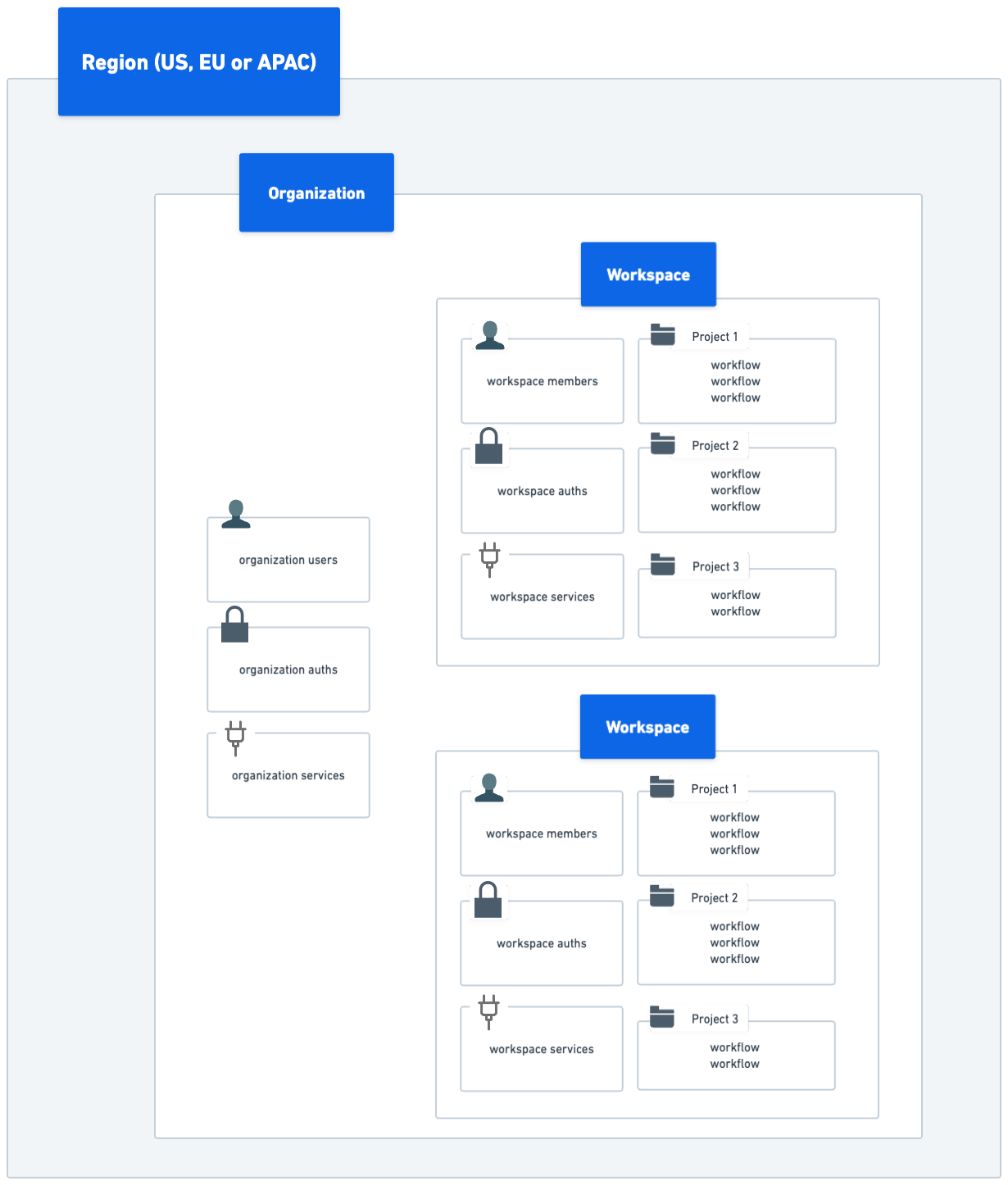
This page gives you an introduction to how workspaces and projects work in a Tray org.
To gain a full understanding of how to effectively organize your workspaces and projects please read our section on environment promotion
What is a workspace?
The number of workspaces you can have depends on your plan:
Pro = 3 workspaces
Team = 20
Enterprise = unlimited
Workspaces can be used to divide your Organization into subsections.
When your Tray.io account is initially created access is granted to two default workspaces:
Organization: This workspace contains workflows and authentications that other members have shared with the entire organization.
Personal: Every user has their own workspace accessible only to them.
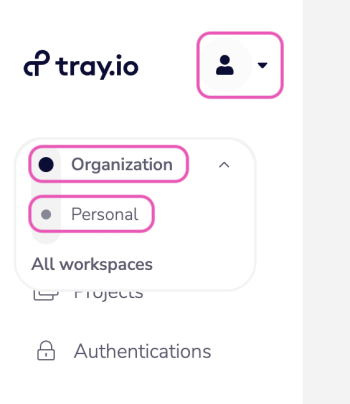
Additional Workspaces can be created and used to sub-divide your organization to however suits your business needs. For example by:
Company department (sales, marketing, HR etc.)
Project units
Teams
Implementation types (Data syncing, ETL etc.)
Creating workspaces
Organization Owners and Admins can click on their profile and add new workspaces as per your organization requirements:

Please see our section on environment promotion for guidance on setting up your workspaces to suit your needs
Setting workspace task limits
It is possible to limit the number of tasks per month in any particular workspace.
This allows you to identify particular workspaces as sandbox / test environments, and ensure that they do not significantly impact your monthly billing.
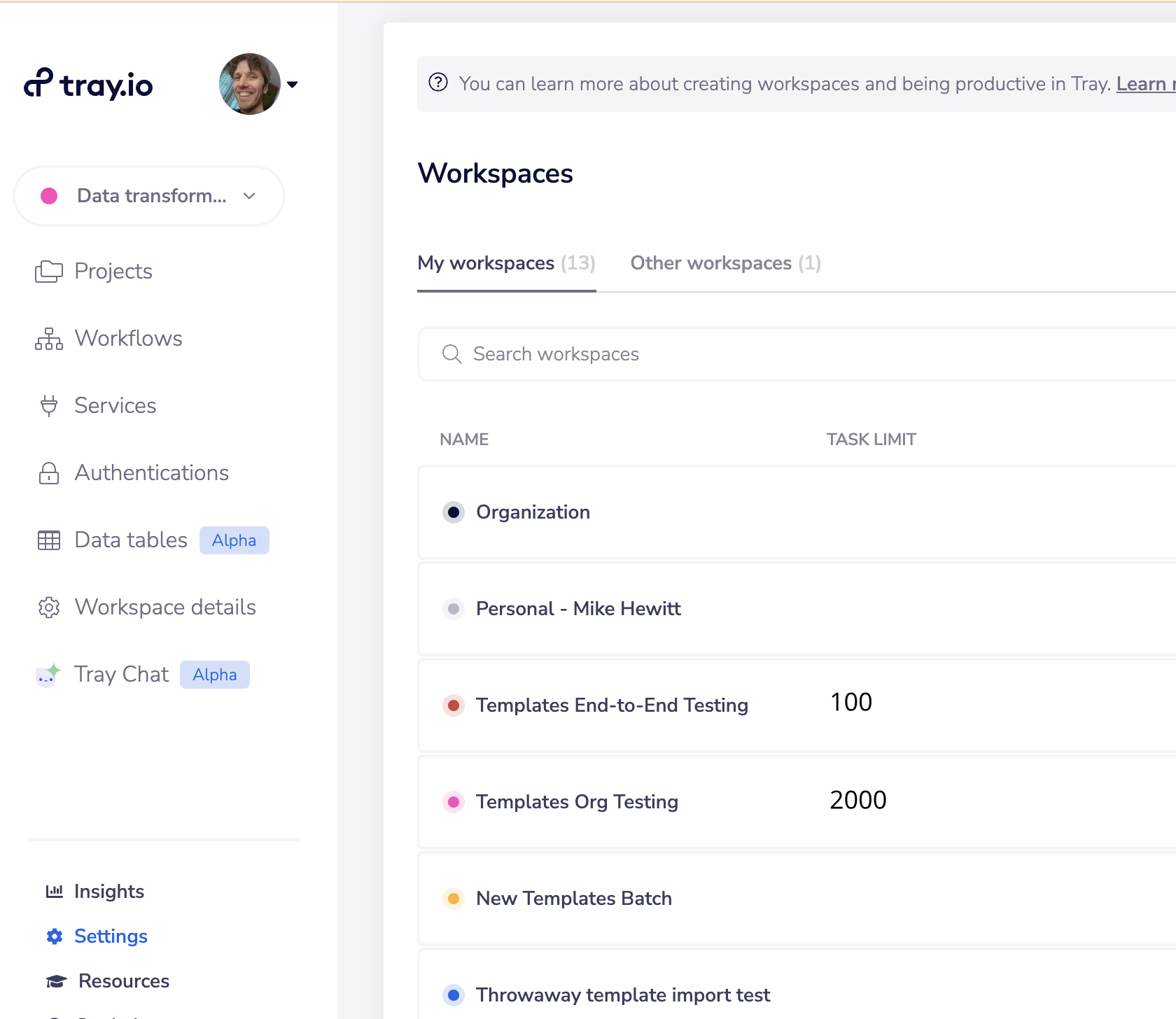
When looking at Workspace details for any particular workspace this can be set in the 'Workspace task limit' box:

Notes on setting workspace task limits
This usage is measured by calendar month, not billing month - i.e. it does not sync if your billing date is e.g. the 15th of every month.
Once the task limit has been reached, workflows in progress will stop; this may result in data loss or corruption
If your task limit has been reached during the execution of a workflow run, your workflow will error.
If required, once a workflow errors, you can increase the task limit for its workspace, and then rerun the workflow.
Adding people to workspaces
You can add people to a workspace when you are creating it or at any stage by clicking on 'Workspace details':
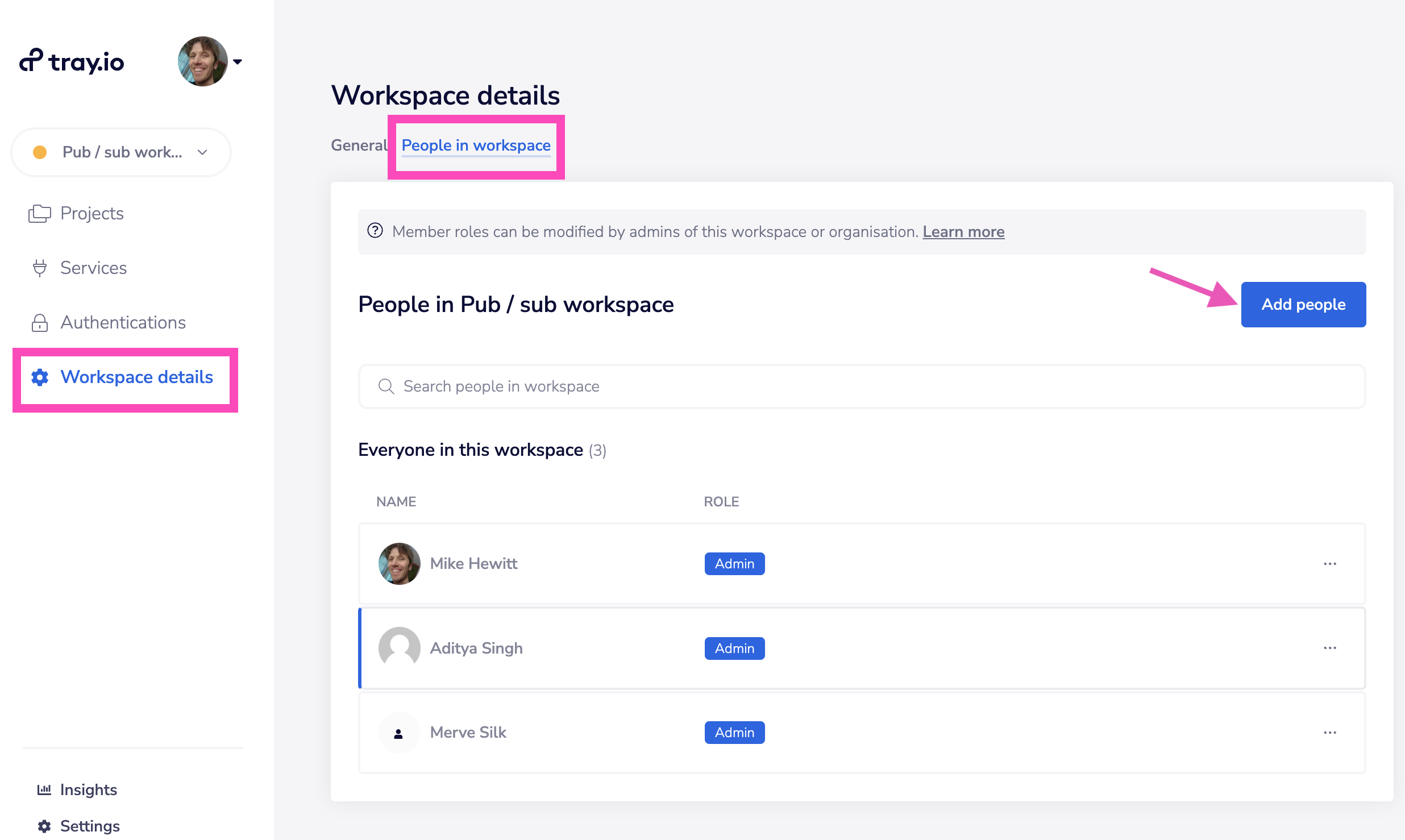
Important notes on adding people to Workspaces
You can skip the 'Add people to Workspaces step' during creation by clicking on the 'I'll do it later' option.
If you're the Workspace creator you'll be added as a Workspace Admin by default. You can change/ update this access level later if need be.
Members can be assigned three access levels:
Workspace Admin: Can edit a workspace (after creation) to the fullest extent.
Workspace Contributor: Can contribute to a workspace but cannot change base settings.
Workspace Viewer: Has only viewing capabilities.
Editing a workspace
Only Owners, Admins and allocated Workspace Admins can edit a Workspace:
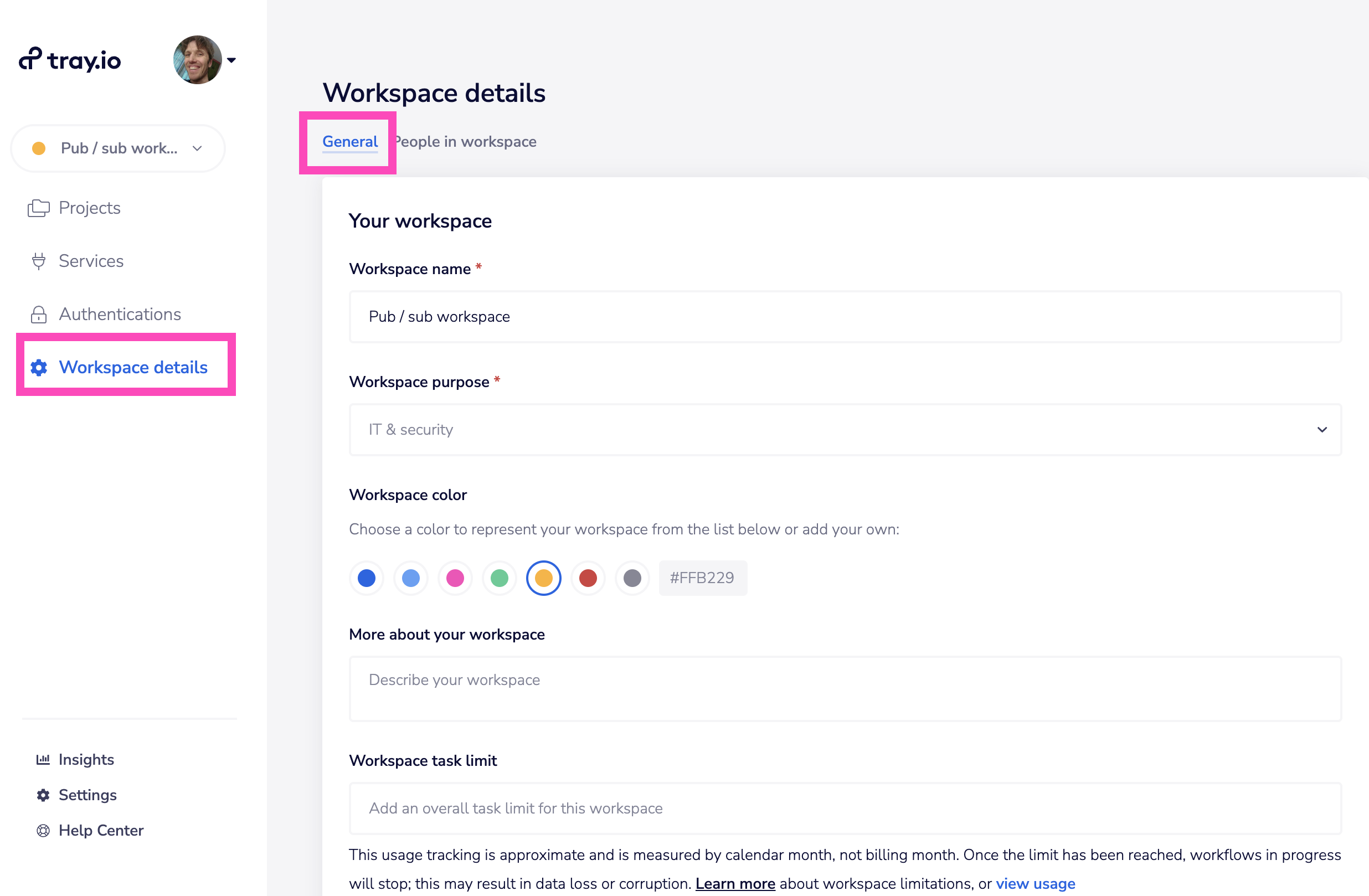
Deleting workspaces
Only Owners, Admins and allocated Workspace Admins can edit a Workspace's members or delete a Workspace entirely.
In order to delete a Workspace you will need to either move the workflows into another Workspace OR delete them individually.
This is to prevent the accidental deletion of any important workflows
In the Workspace details tab you will find a Delete workspace button.
If you are unable to delete a Workspace it may be because:
The Workspace still contains workflows that must be moved or deleted separately
Your access level is not high enough
Both of the above
Leaving a workspace
When leaving a Workspace team members will lose access to everything within the workspace that they left
The exceptions being the Organization Owner and Organization Admins. They will still be able to access and maintain all Workspaces, even if they are not active members
The workflows and authentications created by them will not be affected. They will remain in the shared workspace
Said team members will still be able to access all other Workspaces of which they are a member of
How to leave a workspace
From the People in workspace list
Click on the Workspace details option found on the left hand side navigation. This will take you to the Workspace details tab. from there, click on the People in Workspace tab.
From the Workspace list
Within the Profile settings tab click on the Workspaces tab. Select the Workspace of your choosing.
Click on the 'Options icon' on the right of the Workspace. Select the dropdown option Leave workspace.
What is a project?
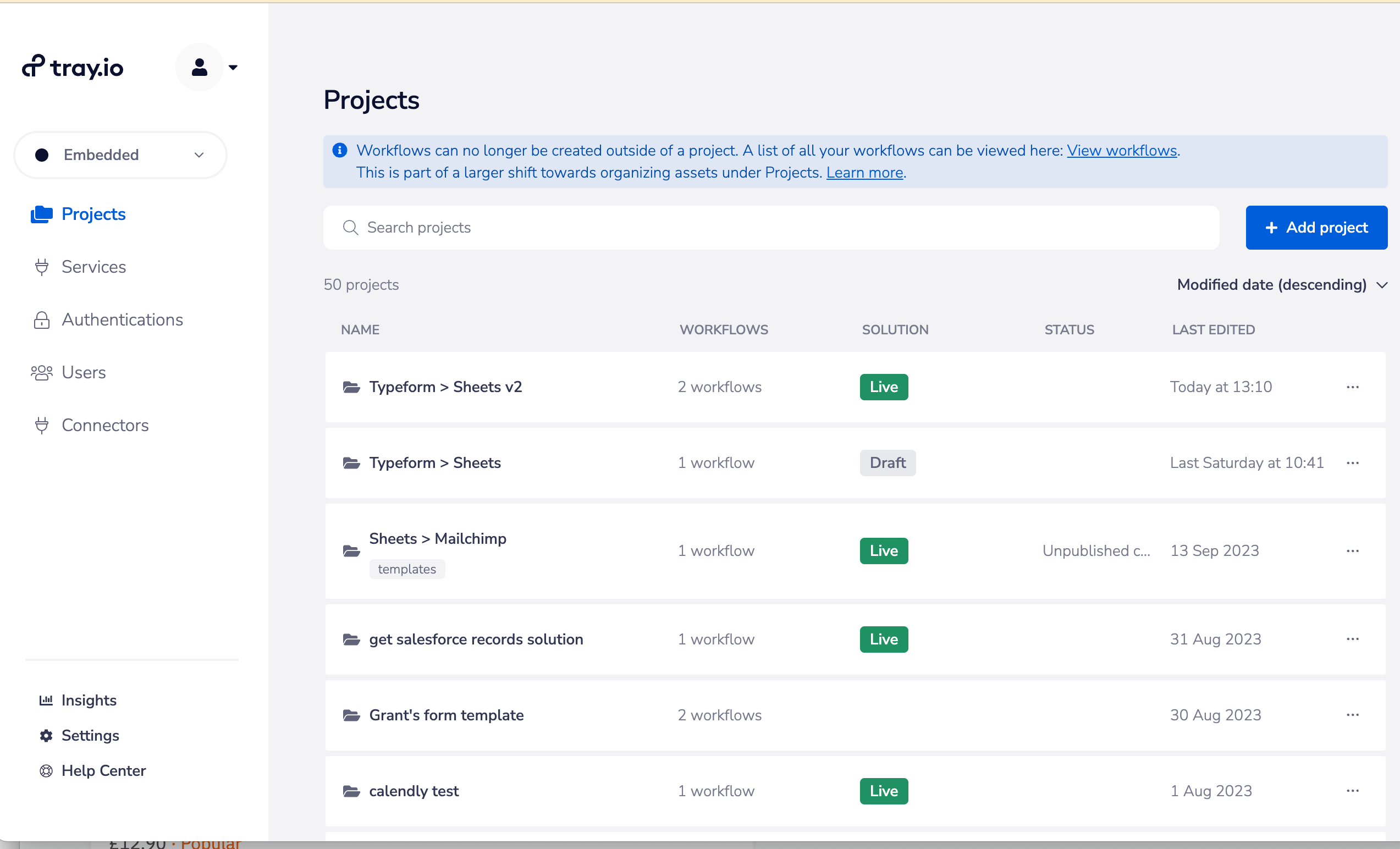
Tray projects follow a classic Information Architecture model.
They are a collection of objects with pre-defined relationships.
Projects are self contained and they contain key Tray building blocks such as workflows.
They live within a workspace and inherit the settings of the workspace in which they are created.
This means you can create:
Personal workspace projects (accessible only by you)
Organization workspace projects (accessible by the entire organization)
Custom workspace projects (accessible only by the members of that workspace)
How to use Projects
Projects can be used to group together workflows which work together to fulfil a particular goal - e.g. create a project for a specific data syncing operation between e.g. HubSpot and Salesloft:
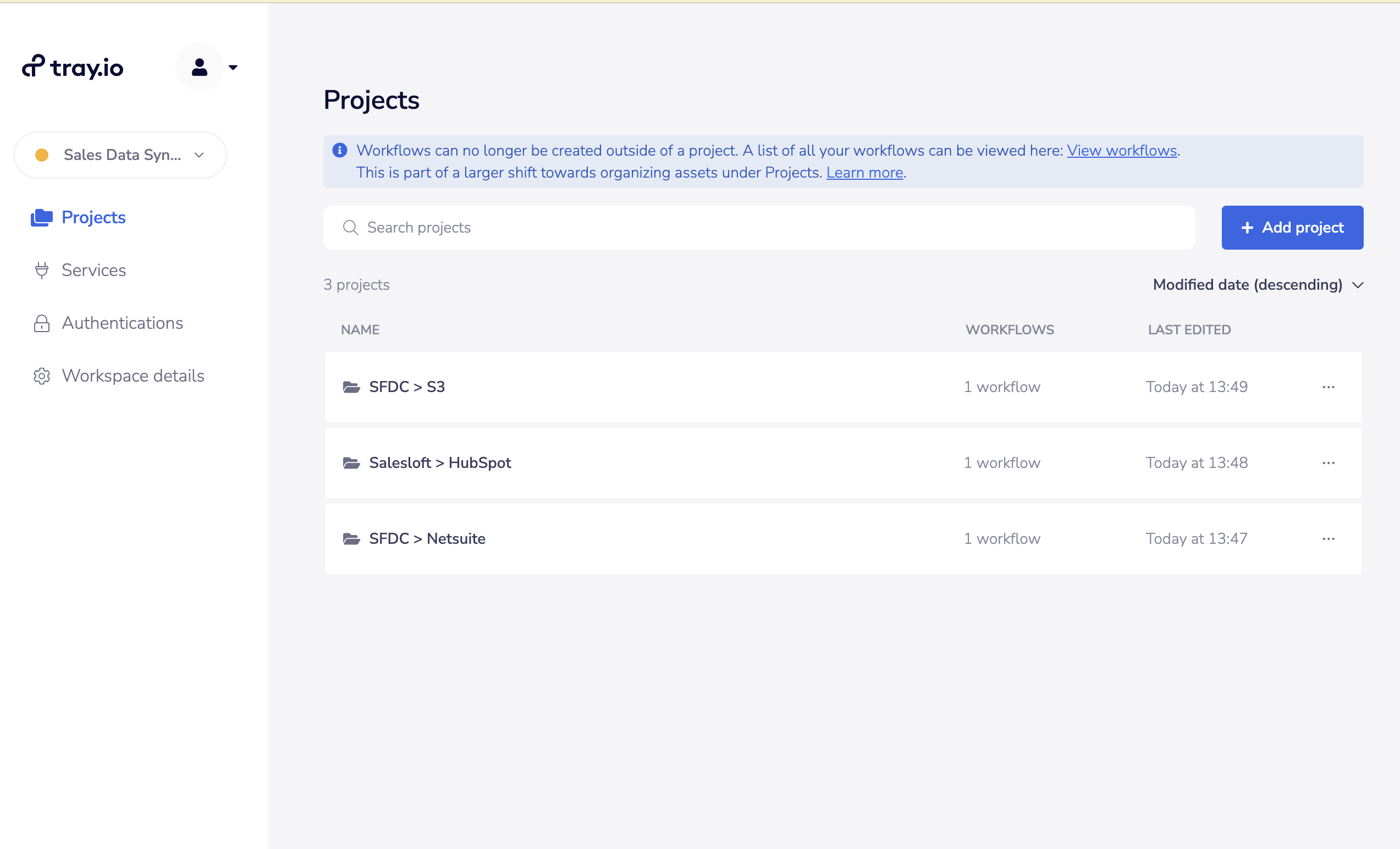
Or you might create projects for callable workflows which any other workflow can call upon for e.g. repeatable data processing tasks:
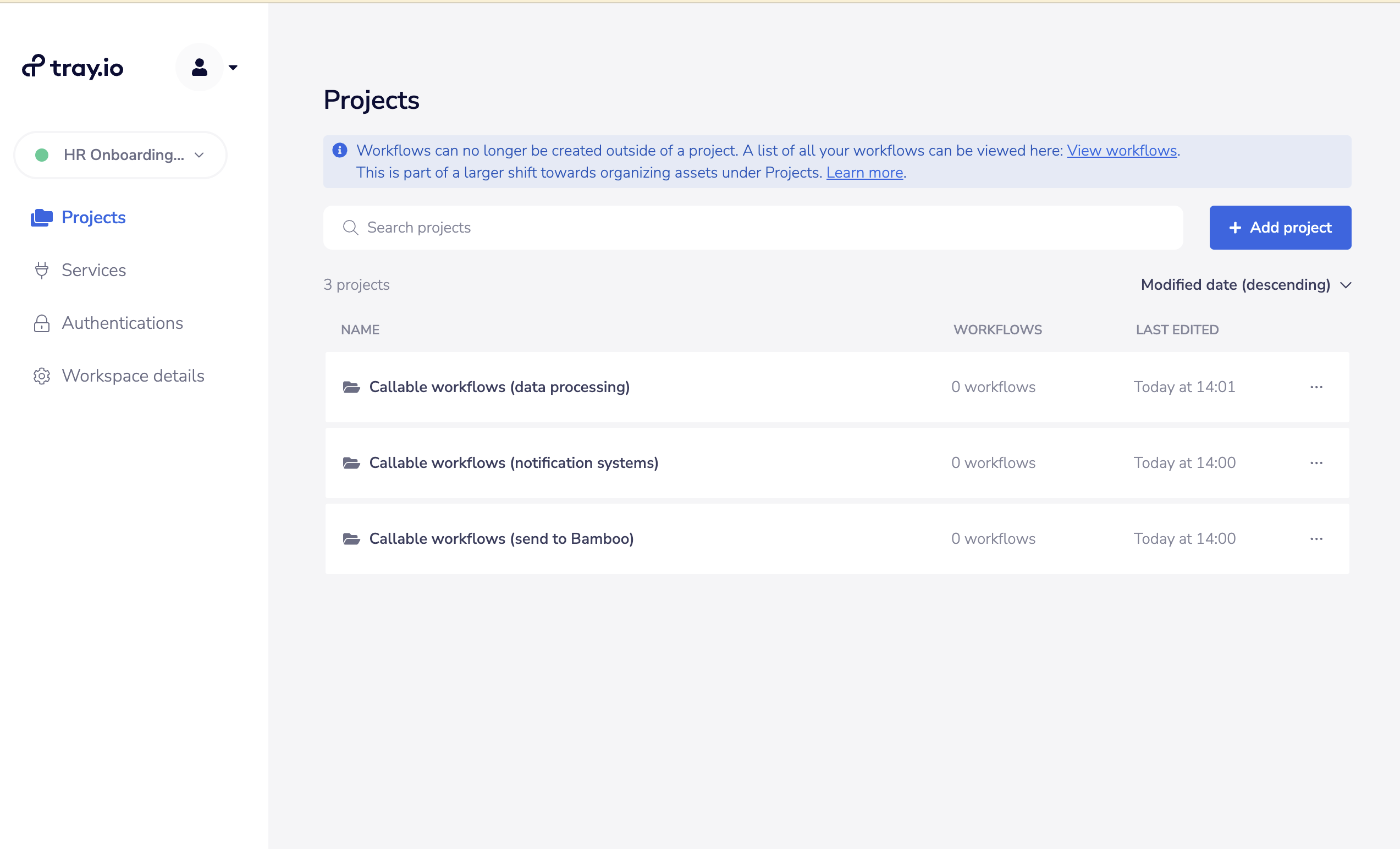
Notes on using projects
A workflow can only be added to one project
A callable workflow within a project can be called by a workflow from another project within the same workspace
Projects can be exported for e.g. import into a production workspace
Project config can be used to store common variables between workflows and so negates the need for an alternative approach such as account-level data storage. This can be done for variable such as:
- group emails
- group IDs
- base URLs (fantastic for switching between environments and reducing error!)
Whenever you create a workflow you will have to add it to an existing Project or create a new one to add it to.
Workflows can only be allocated to one Project at a time.
Viewing workflows across all projects
Workflows are not available in the dashboard navigation
If you wish to view and search workflows across all projects within a workspace, you can click on the 'view workflows' link in the banner message at the top of the projects list:

Version control / env promotion
Projects can facilitate version control and environment promotion.
You can export a project from e.g. your Marketing (dev) workspace and then import it into your Marketing (staging/prod) workspace.
Adding projects to workspaces
When you have multiple projects within your workspace, they are available for searching, tagging and filtering.
When a workspace is first created, however, your projects list will be empty.
When you click to add a project:

You have two ways of doing so:
New project
You can create a new empty project from scratch:
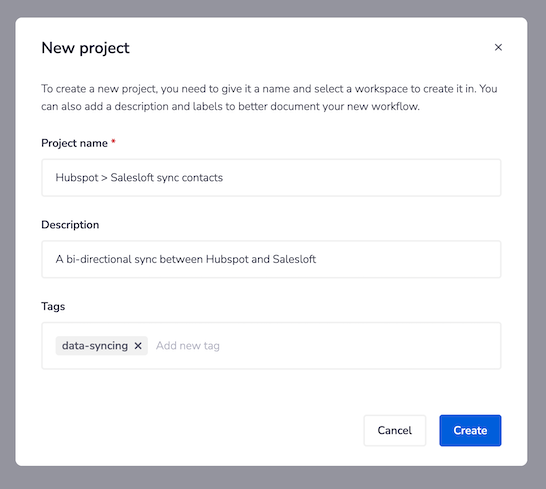
From import
Or you can import a project which you have previously exported
This is particularly useful for version controlling your projects and workflows.
In a typical setup, you might have e.g. a Sales (dev) workspace which contains all your test projects that you can then export once you are happy with them, before importing to your Sales (prod) workspace:
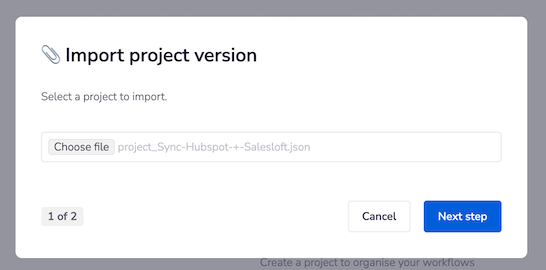
Adding workflows to your projects
When you click to add a workflow:
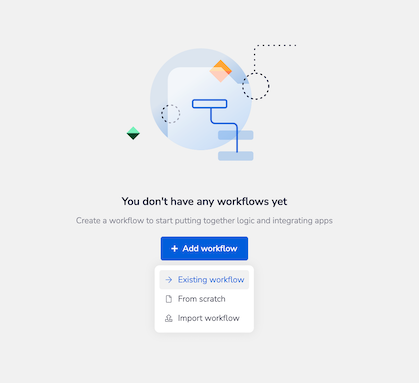
You have 3 ways of doing so:
Existing workflow
The first option is to add a workflow which already exists in the parent workspace.
Note that you can only add workflows which have not already been added to another project:
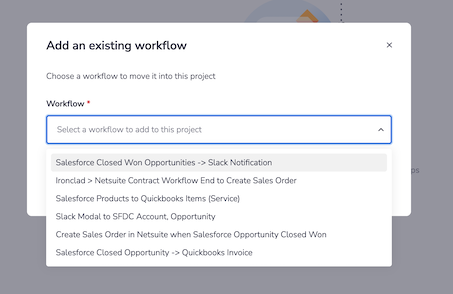
From scratch
You can use this option to start building a workflow from scratch.
It will then be stored in the current project.
Import workflow
You can also import a workflow which you have previously exported

Adding project config
From any workflow in a project you can go to settings and set project config data.
These are common values which can be shared between all workflows in a project - e.g. common email addresses, or service IDs